Abstract
The medical literature contains little information on the occurrence of excess morbidity among pregnant women during recent influenza epidemics. Rates of medical visits for acute respiratory disease (ARD) among pregnant and nonpregnant members of a large prepaid practice population were examined. Use of medical services for ARD was ascertained for approximately 1,000 pregnant women and 3,000 nonpregnant women during each of four epidemic periods (1975, 1976, 1978, 1979) and a nonepidemic period (1977). Comparing the combined epidemic periods with the nonepidemic period, there were significant excesses of 23.7 (standard error (SE) = 8.1) ARD contacts per 1,000 attributable to epidemic influenza for pregnant women and 10.2 (SE = 3.4) for nonpregnant women. ARD hospitalization rates among pregnant women were low (2 per 1,000), and there were no maternal deaths. The significant ARD excess among pregnant women was concentrated in the 1978 period with reappearance of the A/Russia H1N1 subtype in the community and was confined to those under age 25 who would not have ben previously exposed to this subtype (94.4 (SE = 28.5]. These findings indicate that recent influenza epidemics caused only modest excess ARD morbidity among pregnant women, and significant excess occurred only in association with antigenic shift. These findings support current national policy recommendations with respect to influenza vaccination of pregnant women.
Full text
PDF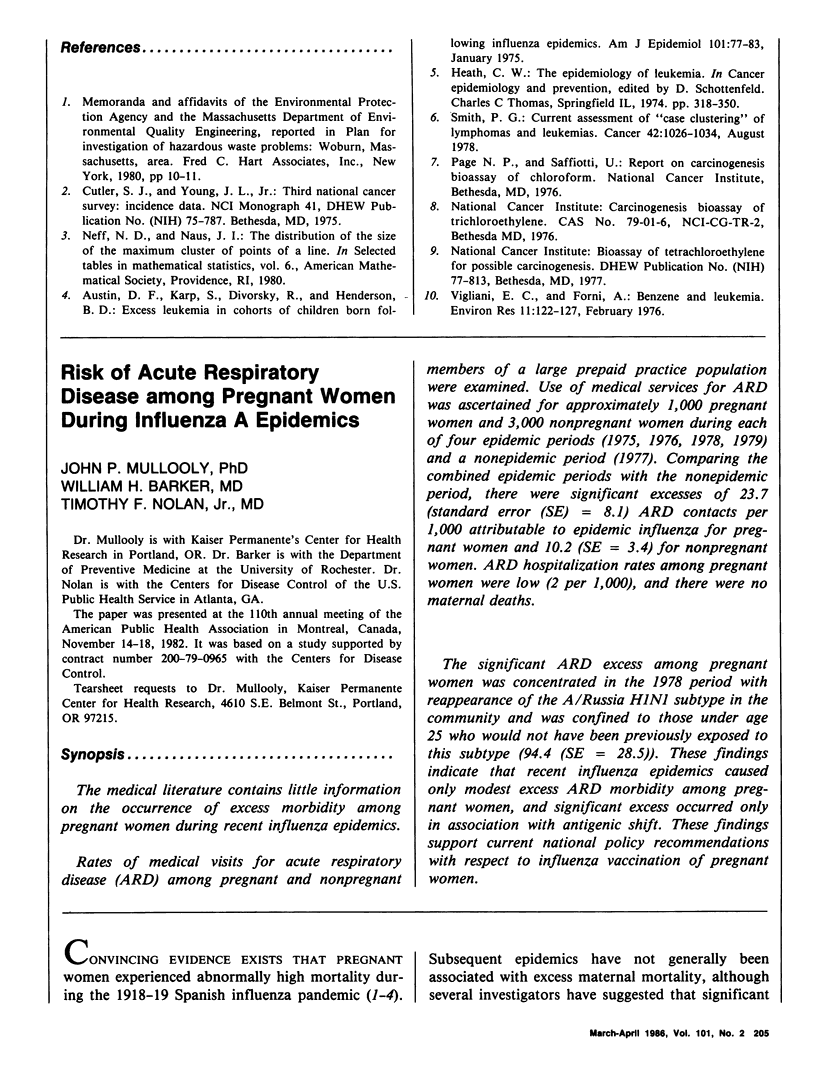
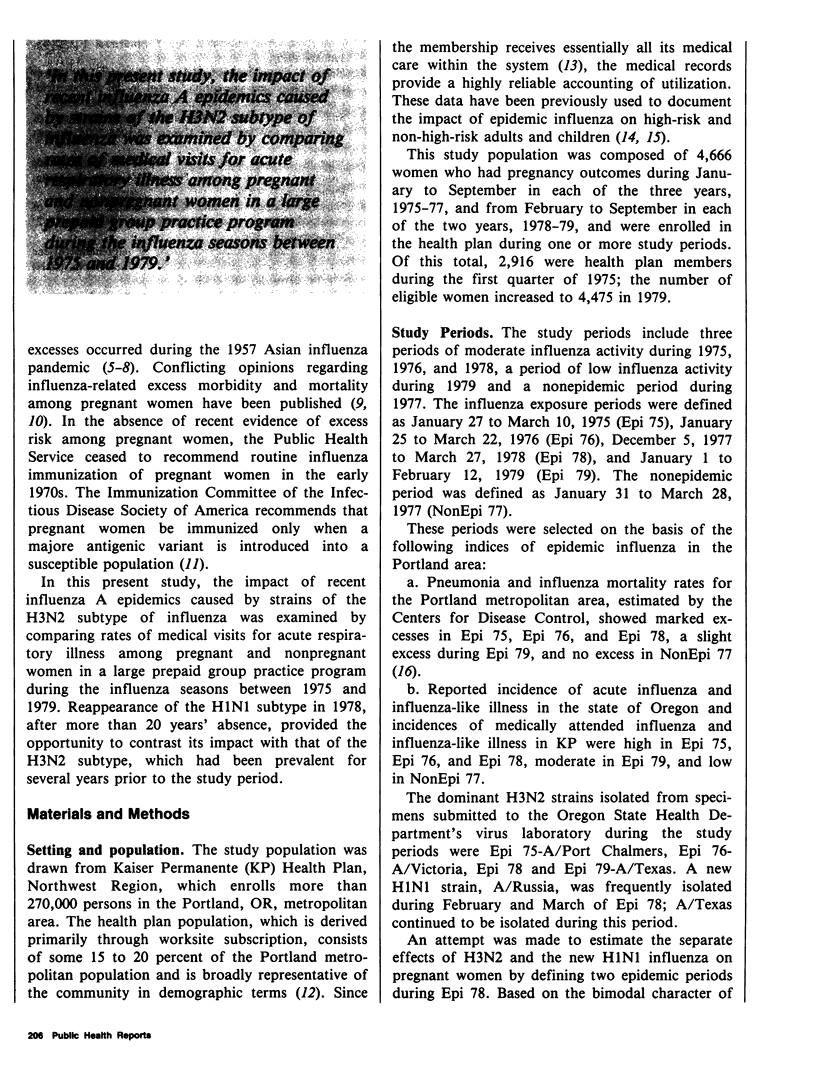
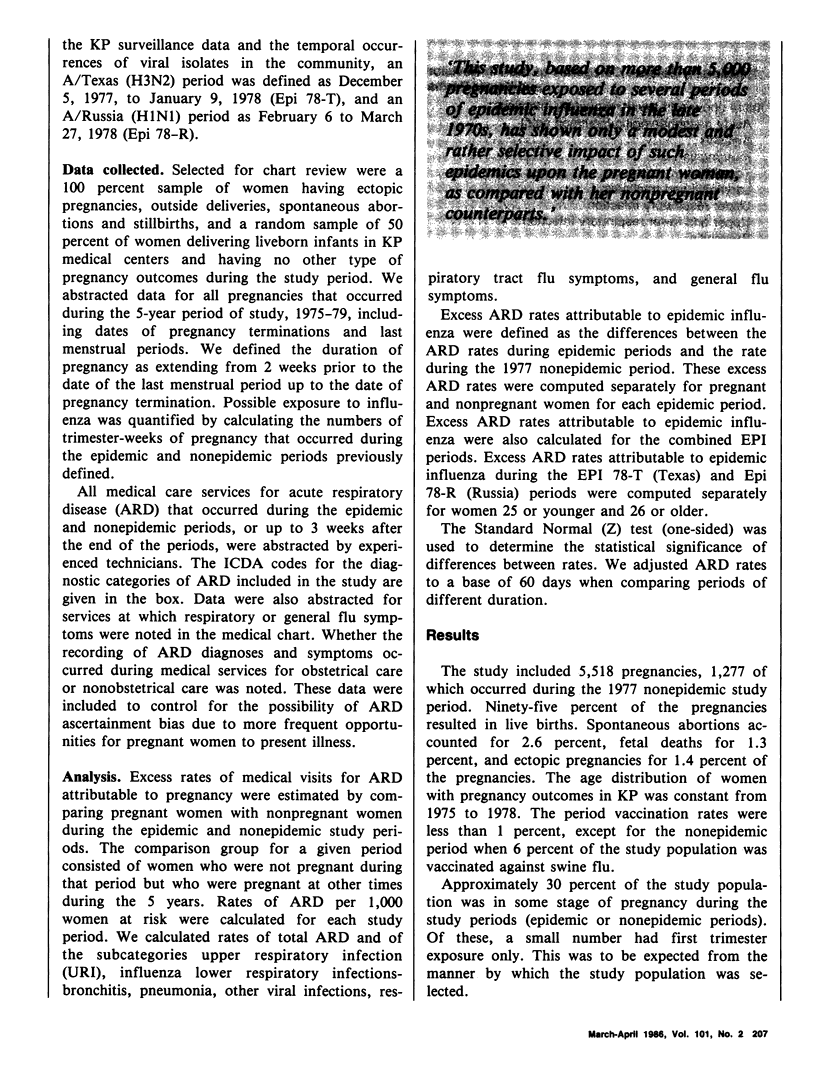
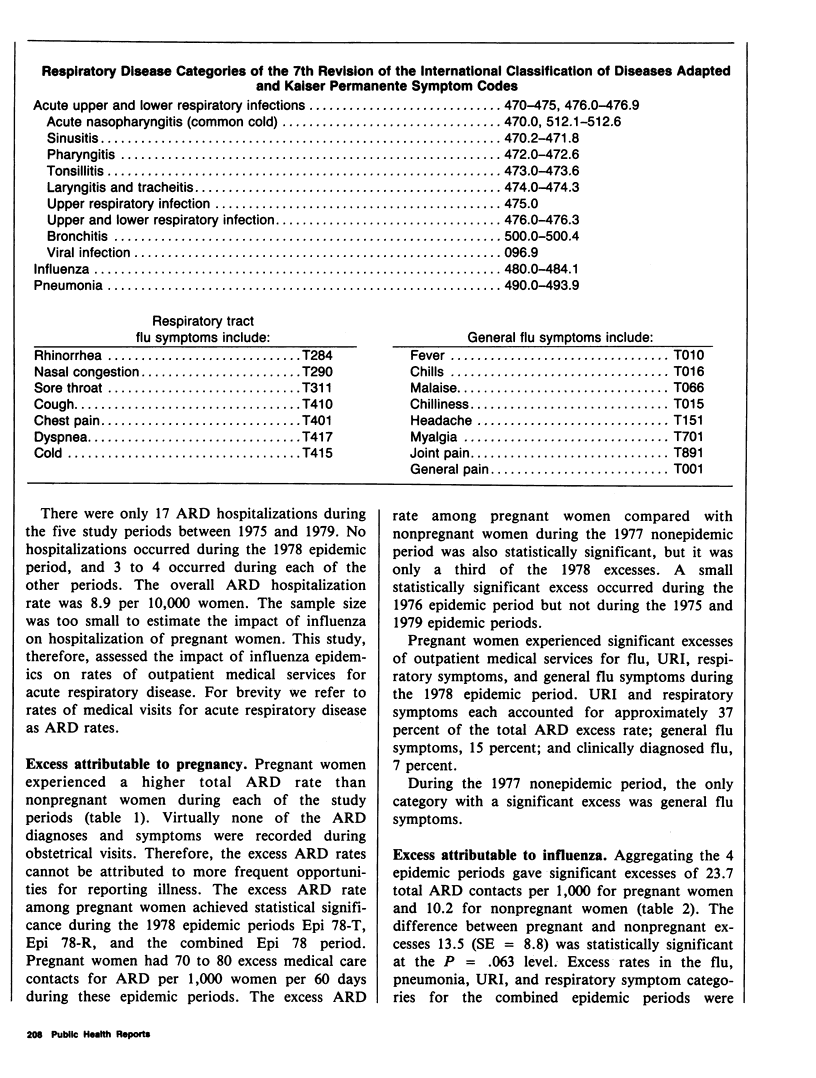
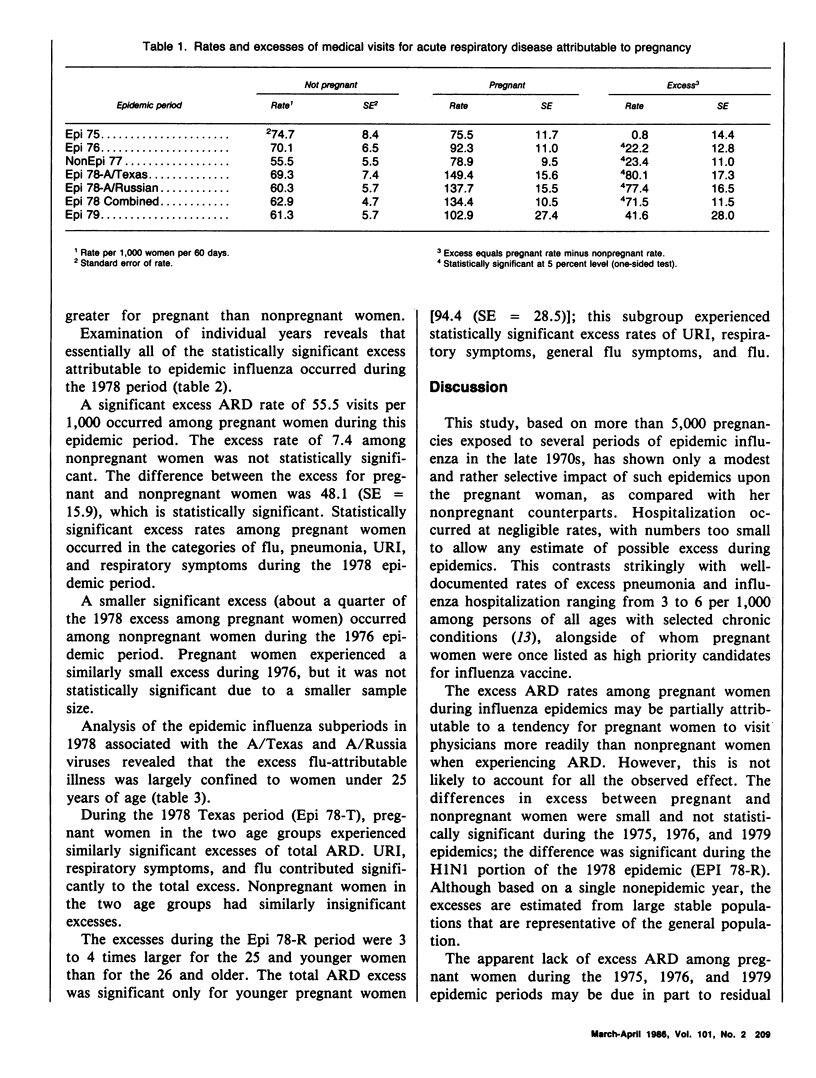
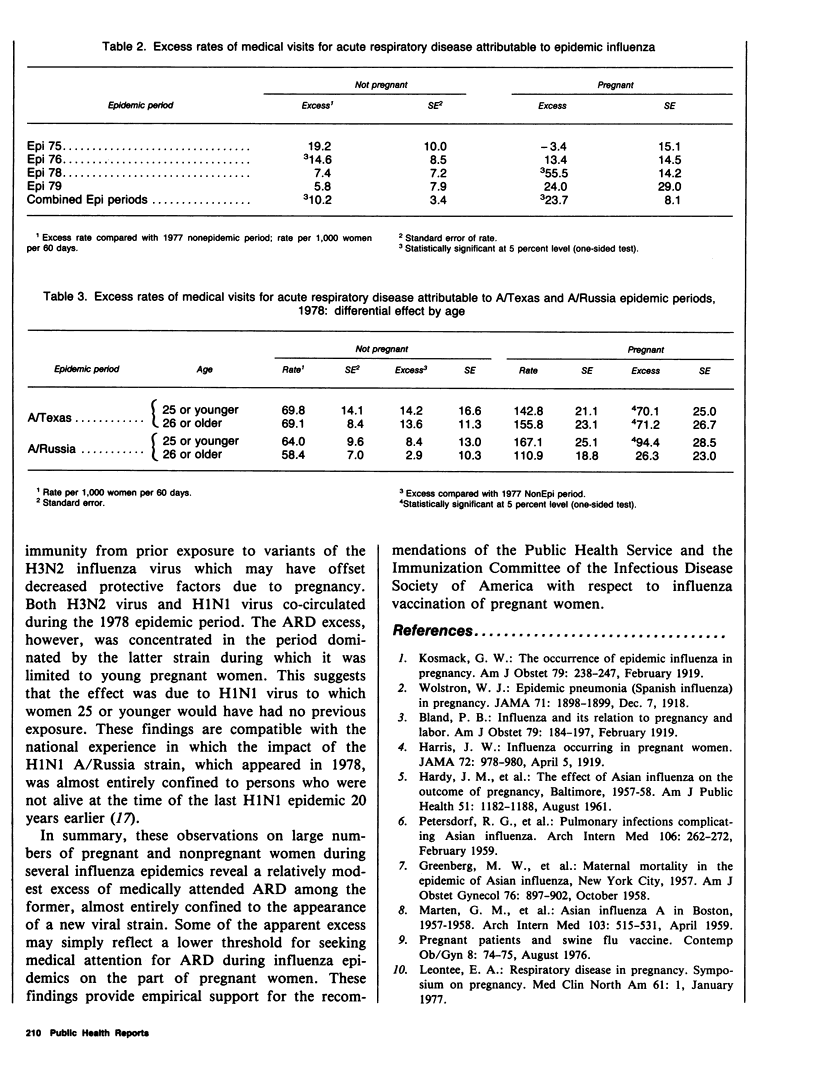
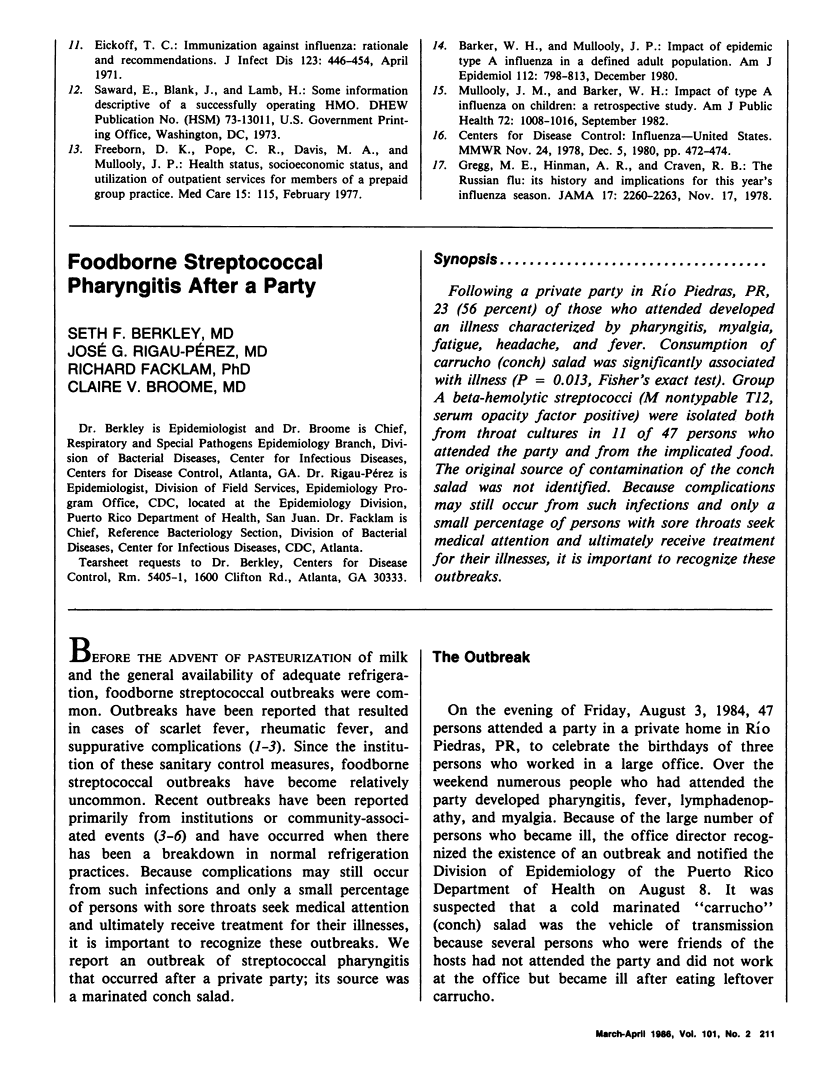
Selected References
These references are in PubMed. This may not be the complete list of references from this article.
- Barker W. H., Mullooly J. P. Impact of epidemic type A influenza in a defined adult population. Am J Epidemiol. 1980 Dec;112(6):798–811. doi: 10.1093/oxfordjournals.aje.a113052. [DOI] [PubMed] [Google Scholar]
- Eickhoff T. C. Immunization against influenza: rationale and recommendations. J Infect Dis. 1971 Apr;123(4):446–454. doi: 10.1093/infdis/123.4.446. [DOI] [PubMed] [Google Scholar]
- Freeborn D. K., Pope C. R., Davis M. A., Mullooly J. P. Health status, socioeconomic status and utilization of outpatient services for members of a prepaid group practice. Med Care. 1977 Feb;15(2):115–128. doi: 10.1097/00005650-197702000-00002. [DOI] [PubMed] [Google Scholar]
- GREENBERG M., JACOBZINER H., PAKTER J., WEISL B. A. Maternal mortality in the epidemic of Asian influenza, New York City, 1957. Am J Obstet Gynecol. 1958 Oct;76(4):897–902. doi: 10.1016/0002-9378(58)90027-9. [DOI] [PubMed] [Google Scholar]
- Gregg M. B., Hinman A. R., Craven R. B. The Russian flu. Its history and implications for this year's influenza season. JAMA. 1978 Nov 17;240(21):2260–2263. doi: 10.1001/jama.240.21.2260. [DOI] [PubMed] [Google Scholar]
- HARDY J. M., AZAROWICZ E. N., MANNINI A., MEDEARIS D. N., Jr, COOKE R. E. The effect of Asian influenza on the outcome of pregnancy, Baltimore, 1957-1958. Am J Public Health Nations Health. 1961 Aug;51:1182–1188. doi: 10.2105/ajph.51.8.1182. [DOI] [PMC free article] [PubMed] [Google Scholar]
- Mullooly J. P., Barker W. H. Impact of type A influenza on children: a retrospective study. Am J Public Health. 1982 Sep;72(9):1008–1016. doi: 10.2105/ajph.72.9.1008. [DOI] [PMC free article] [PubMed] [Google Scholar]
- PETERSDORF R. G., FUSCO J. J., HARTER D. H., ALBRINK W. S. Pulmonary infections complicating Asian influenza. AMA Arch Intern Med. 1959 Feb;103(2):262–272. doi: 10.1001/archinte.1959.00270020090010. [DOI] [PubMed] [Google Scholar]


